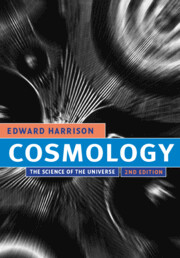Book contents
- Frontmatter
- Contents
- Preface
- Introduction
- PART I
- 1 What is cosmology?
- 2 Early scientific cosmology
- 3 Cartesian and Newtonian world systems
- 4 Cosmology after Newton and before Einstein
- 5 Stars
- 6 Galaxies
- 7 Location and the cosmic center
- 8 Containment and the cosmic edge
- 9 Space and time
- PART II
- PART III
- Appendix – Fundamental quantities
- Index
5 - Stars
from PART I
Published online by Cambridge University Press: 05 June 2012
- Frontmatter
- Contents
- Preface
- Introduction
- PART I
- 1 What is cosmology?
- 2 Early scientific cosmology
- 3 Cartesian and Newtonian world systems
- 4 Cosmology after Newton and before Einstein
- 5 Stars
- 6 Galaxies
- 7 Location and the cosmic center
- 8 Containment and the cosmic edge
- 9 Space and time
- PART II
- PART III
- Appendix – Fundamental quantities
- Index
Summary
“The stars,” she whispers, “blindly run:
A web is wov'n across the sky;
From our waste places comes a cry,
And murmurs from the dying sun.”
Alfred Tennyson (1809–1892), In MemoriamTHE DISTANT STARS
Light travel time
We look out from Earth and see the Sun, planets, and stars at great distances (see Figure 5.1). The Sun, our nearest star, is at distance 150 million kilometers or 93 million miles. Kilometers and miles, suitable units for measuring distances on the Earth's surface, are much too small for the measurement of astronomical distances (see Table 5.1).
Almost all information from outer space comes to us in the form of light and other kinds of radiation that travel at the speed 300 000 kilometers per second (see Table 5.2). Light from the Sun takes 500 seconds to reach the Earth, and we see the Sun as it was 500 seconds ago. We say the Sun is at distance 500 light seconds. The time taken by light to travel from a distant body is called the light travel time. Light travel time is an attractive way of measuring large distances and has the advantage that we know immediately how far we look back into the past when referring to a distant body. A star 10 light years away (almost 100 trillion kilometers) is seen now as it was 10 years ago. Always, when looking out in space, we look back in time.
- Type
- Chapter
- Information
- CosmologyThe Science of the Universe, pp. 87 - 112Publisher: Cambridge University PressPrint publication year: 2000

